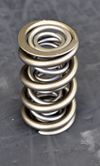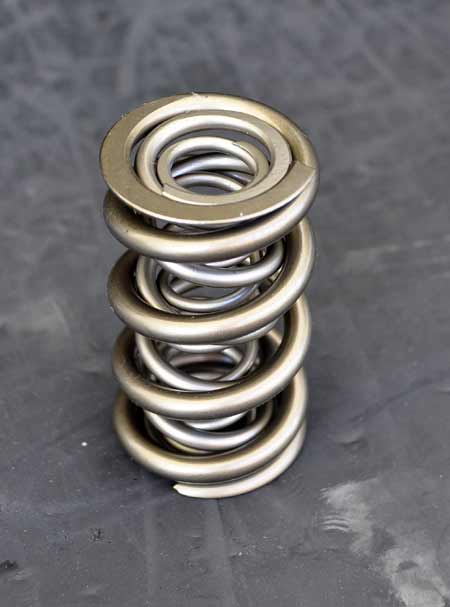Double-spring valve springs for success
 John Force Racing (JFR) is one of the most successful Funny Car teams in the history of the NHRA Full Throttle Drag Racing Series. Understanding that multiple team cars on the track results in successfully shared technology, JFR this year is competing with three drivers - John Force, Robert Hight and Mike Neff. There would have been four, but daughter Ashley Force Hood is taking the year away from competition to give birth to her first child.
John Force Racing (JFR) is one of the most successful Funny Car teams in the history of the NHRA Full Throttle Drag Racing Series. Understanding that multiple team cars on the track results in successfully shared technology, JFR this year is competing with three drivers - John Force, Robert Hight and Mike Neff. There would have been four, but daughter Ashley Force Hood is taking the year away from competition to give birth to her first child.
Neff, the crew chief who helped Gary Scelzi to his 2005 championship, came to JFR in 2008 as a driver, with tuning duties performed by John Medlen. He earned the Auto Club Road to the Future (rookie of the year) award that season and took his first Funny Car victory in the season finale in 2009.
Neff then stepped away from the driver's seat and tuned Force to his 15th career Funny Car title in 2010, and when Force Hood stood down, he got the opportunity to race again - and tune his own car in the process.
Like most crew chief tuners in NHRA, Neff pays special attention to valvetrain issues and valve springs. And like the entire JFR team, he specifies a PAC double-spring steel valve spring.
"It's what most people run in this class, with an inner and outer coil," he says. "We run about 425 lb of spring pressure, with a little bit more on the intake than exhaust. They fall off a little bit on each run (between 10-25 lb of pressure) and the intakes last eight runs, sometimes more than that. We use the exhaust valve springs for as many as ten to 12 runs" down the 1000 ft dragstrip.
JFR has been running the same-spec valve spring for years, Neff says, even though the team has gone to a Ford/JFR-designed cylinder head. "We keep track of how many runs are on them, and know from past experience how many runs we can do before we encounter failures," he says.
Failures come in the Funny Car class as a result of the customary wear and tear. "The springs just wear out traditionally over time, but we've had some break in the past. They break in the middle and then the piston runs into the spring and you've got some big, big problems," he says.
"You've got to have some kind of cut-off point for all these parts, otherwise you have catastrophic failures, and you can't have that in this business." The same-spec 6.90 oz (195.6 g) valve spring has been on all JFR Ford Mustang cars for the past two years, according to Neff.

Everything seems to be going to plan for Neff and his Ford Mustang Funny Car. He is the first in his class to qualify for the NHRA's Countdown to the Championship six-race play-off series that begins following Labour Day's Mac Tools US Nationals at Lucas Oil Raceway outside Indianapolis. Leading his category into the Countdown is the current goal, so Neff is rather guarded about his tuning work.
JFR has used several manufacturers' valve springs in the past "but these PAC springs hold up the best. They're the best I've ever run on dragsters, Funny Cars or any other cars I've worked on," Neff says. It's a flat-top spring and "the thing is wound so it's got a lot of room in the middle for the high-lift camshaft we use. They're wound together right on the end, with the retainer so that they go up and down in a straight manner. They try to get crooked so we're very careful with how we manage them."
Fig. 1 - John Force Racing PAC steel double-spring valve spring (Photo: Anne Proffit)
Written by Anne Proffit